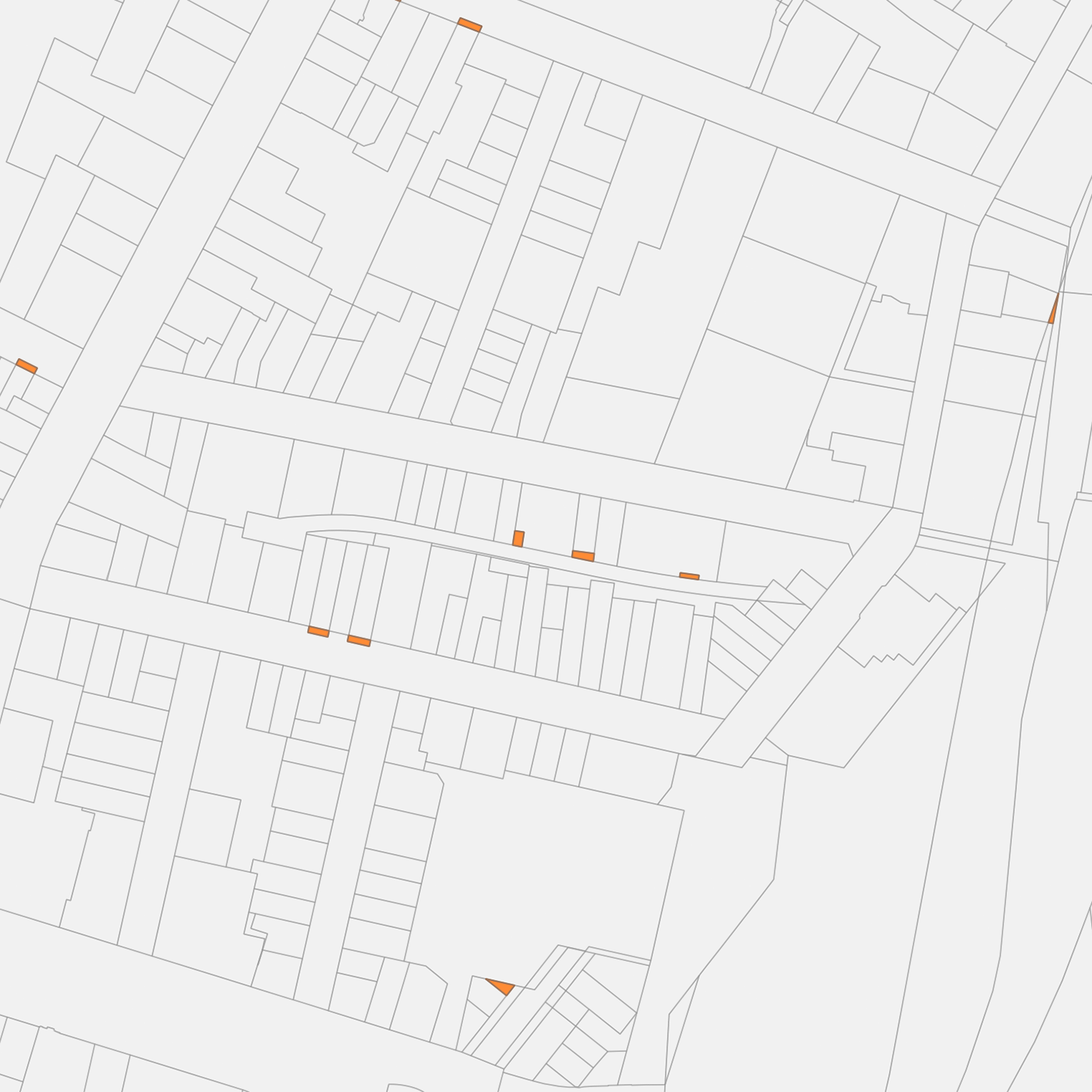Automating Vacant Plot Detection
Streamlining Identification of Compact, Vacant Plots
Acquiring land for the current generations is increasingly challenging in the existing conditions of the housing market. Particularly, in significant German cities, the housing market is under immense pressure, and entering the real estate market poses substantial barriers. The recent rise in the prime interest rate has further complicated the acquisition of real estate.
These challenges need to be overcome and highlighted via open and universally accessible data.
 Marked in orange: Small remaining plots of land with a size between 20 and 70 square meters in the state of Berlin
Marked in orange: Small remaining plots of land with a size between 20 and 70 square meters in the state of Berlin
What is the purpose of our project?
The primary goal of this research project is to facilitate urban housing density (“Inner Development Measures” → Berlin Urban Development Plan 2030 for Housing)1 and diminish the complexities involved in land acquisition through the systematic identification of compact, vacant land parcels.
The research leverages a database of public geodata from local cadastral offices to sift through numerous available plots. The data is organized and visually represented based on plot size using automated processes exclusively developed with open-source software.
The project objectives: What are we aiming to achieve?
Our project aims to demonstrate how to successfully locate and acquire a vacant plot in Berlin by employing the method outlined above, with the ultimate intent to construct a non-profit compact building volume.
Can the project objectives be quantified and validated?
In the long run, what is envisioned is the creation of an online platform that provides a comprehensive overview of available residual plots. This platform could incorporate additional manually submitted data via crowdsourcing, thereby creating a framework to determine the feasibility of potential projects.
Are there risks in the publication of the research?
While the details about these properties could potentially be utilized for private commercial means, going against the notion of securing low-cost housing or pursuing community centric uses, it is anticipated that due to the compact nature of the lots, any private investment would remain economically unviable.
State of research
What are the recent advancements in research on this topic?
Certain cities like Frankfurt am Main have already established an official land registry for vacant lands; however, this is solely focused on considerably sized and easily usable plots. The choice of plots in this context is restricted to a low two-digit range. Simultaneously, the plot sizes are such that they are attractive to investors, necessitating a significant amount of seed capital. Smaller, highly compact residual plots are not systematically registerd, as they are seemingly not relevant for the authorities.
 Highlighted in orange: The plot fragments filtered with the method described below
Highlighted in orange: The plot fragments filtered with the method described below
Methodology
The following list outlines the required steps:
- Identify relevant data sources (offices Opengeodata)2
- Incorporate data sources into QGIS and filter based on size
- Import the base map from Openstreetmaps
- Apply filters on the plots
- Identify plots conducive for construction
- Categorize into fields
- Carry out manual selections → training data for automated plot selection for building → machine learning with Liner.ai
- Research property ownership through the responsible authority
- Initiate contact with property owner
- Develop funding models for not-for-profit uses
This procedure will be further detailed in a separate post as a step-by-step guide.
References
The concept of building on small parcels of leftover land was formulated during a design course on “Microliving” at the Technical University of Braunschweig at the Institute for “Design and Building Design” (Institut für Entwerfen und Baugestaltung Professor Dan Schürch)3. Over multiple semesters from 2020 to 2023, during the six-week compact courses, students surveyed and mapped compact leftover sites in the city of Braunschweig and developed fictional designs for them.
Gordon Matta Clark’s 1973 art project “Fake Estates” served as a historical point of reference for this search for residual spaces. 4
Resources
The following sites are recommended to further explore the topics:
- QGIS A Free and Open Source Geographic Information System
- A list of open geodata in Germany sorted by federal state